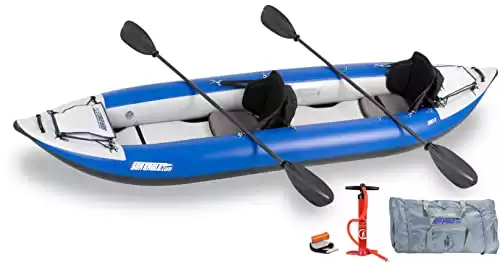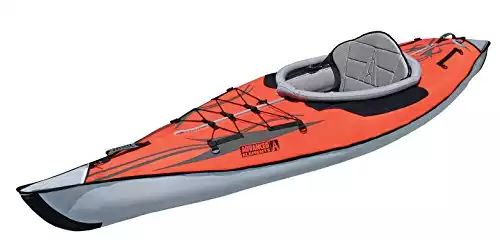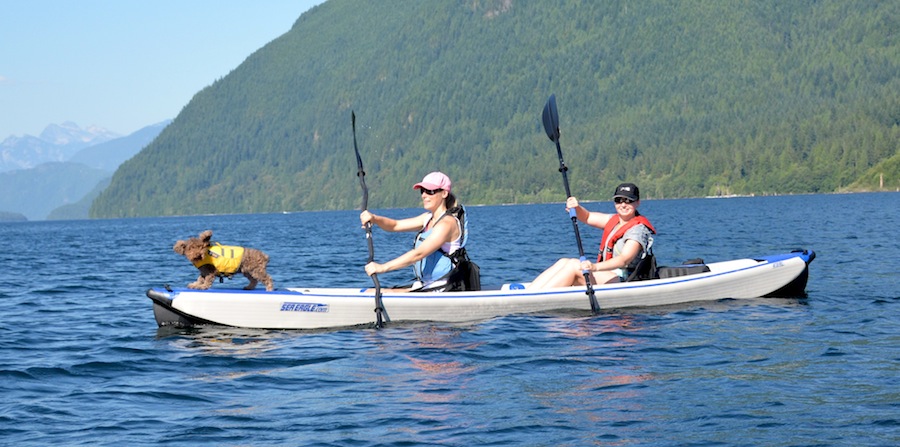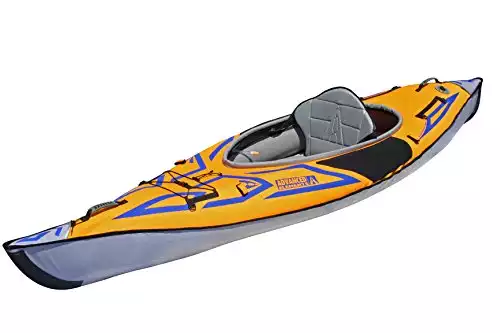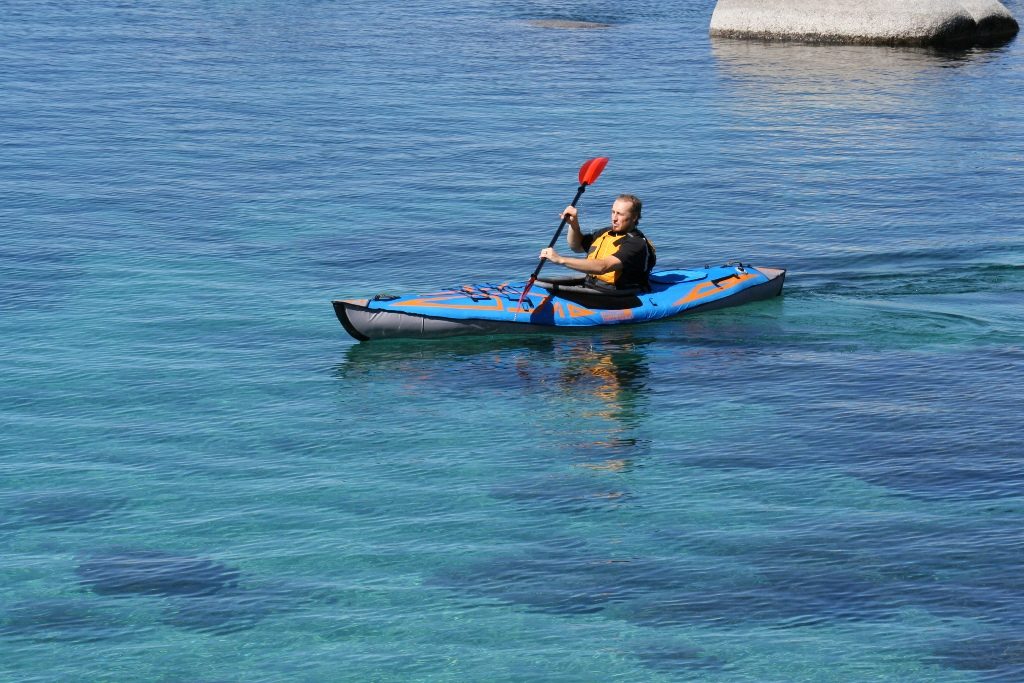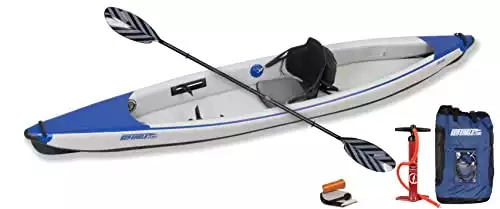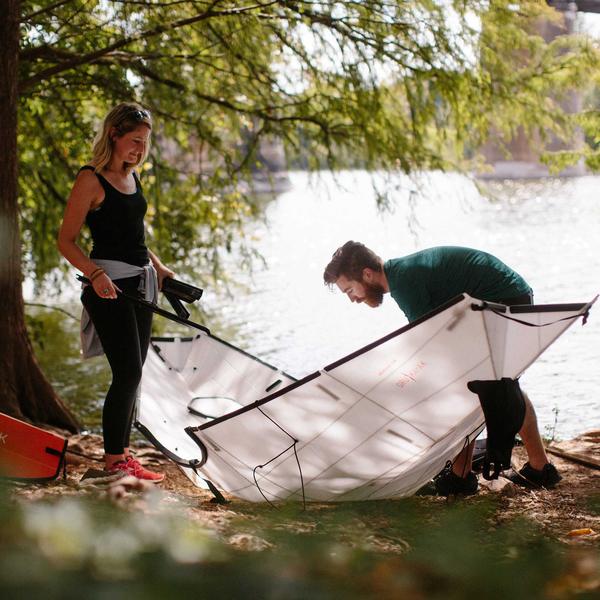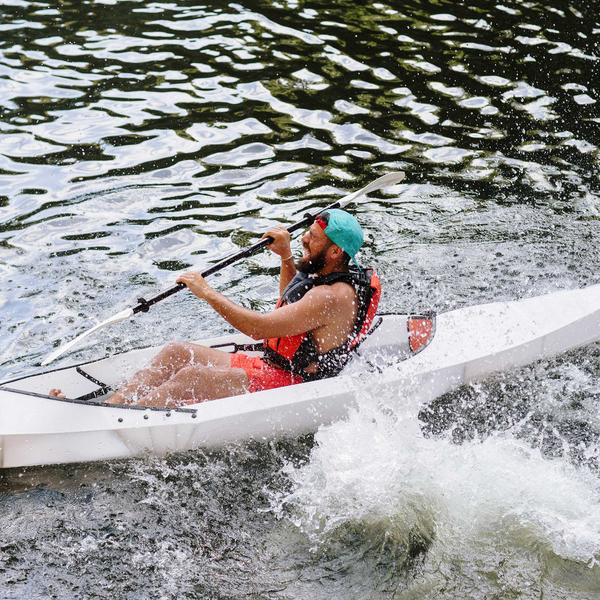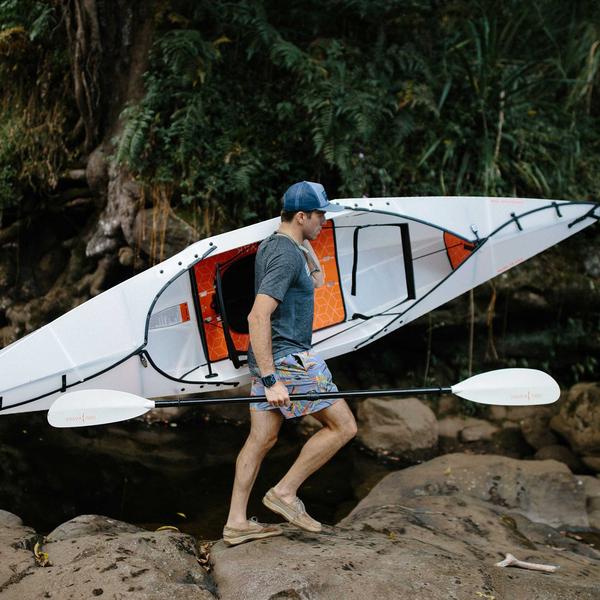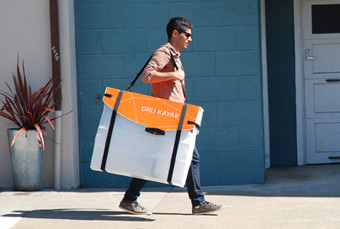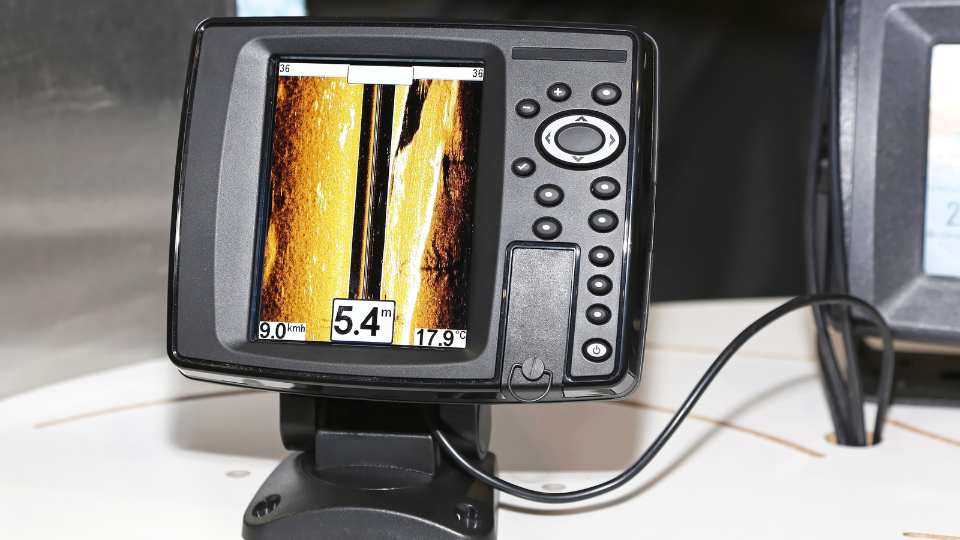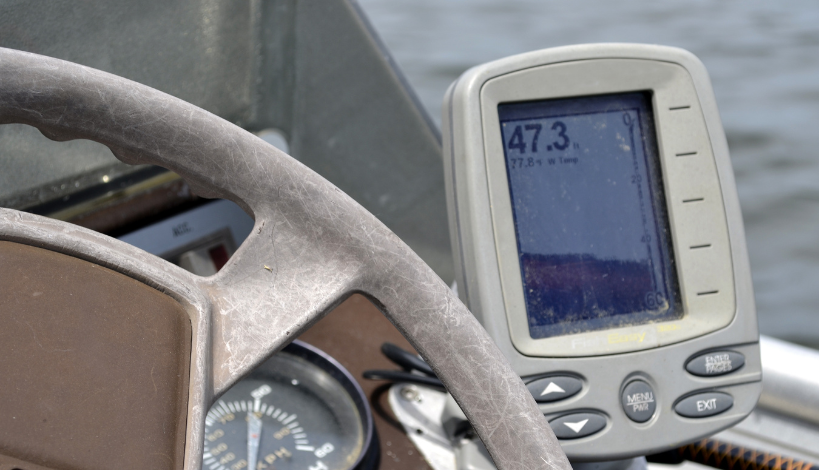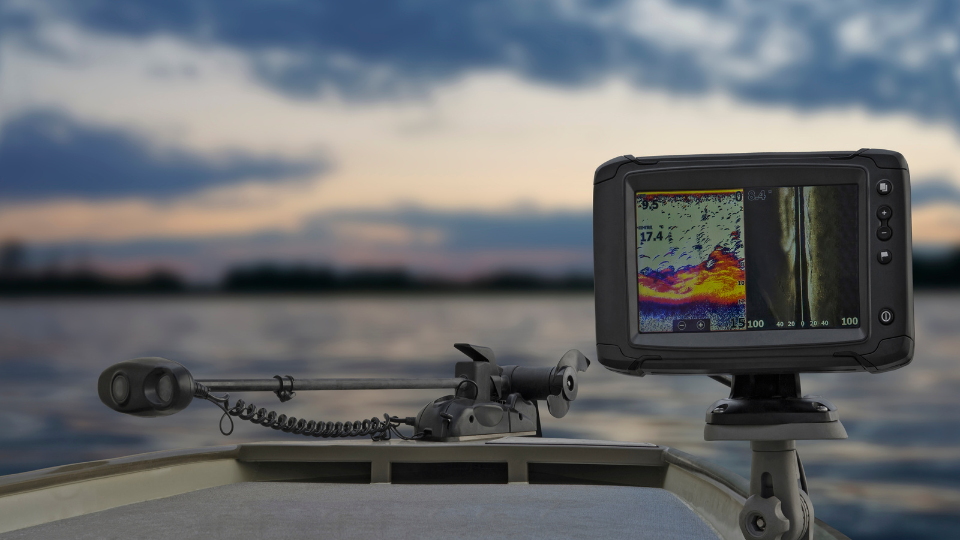Man, looking back at the first few times I got into the kayak and tried to start paddling, it brings back some hilarious memories.
The very first time I attempted this in a calm lake, I was so excited that when I pushed off and got in, the kayak flipped and well, everyone got a good laugh while I learned my first lesson.

With that said, I’ve got some solid tips to help you learn how to get in a kayak safely from the shoreline without making yourself the butt of jokes like I did the very first time I attempted this.
So, off we go paddling! PS. If you have an inflatable kayak you want to get in and out of, check out that specific article.
Tip #1: Start with a Stable Position
Before you even think about stepping into your kayak, it’s important to make sure it’s in a stable position. With an kayak, this can feel even trickier so make sure everything is ‘sturdy’.
Ideally, you’ll want to launch from a shoreline that’s flat, stable, and free of any major obstacles or obstructions that could trip you up. Take a moment to check the tide and weather conditions and make sure they’re suitable for kayaking.
Once you’ve found the perfect spot, lay your kayak parallel to the shore, and be sure to stabilize the bow and stern with rocks or sandbags if necessary and get in nice and steady.
Tip #2: Position Your Kayak Correctly
To make getting into your kayak easier, you’ll want to position it so that the cockpit (the area where you sit) is facing the water and you’re standing on the opposite side.
This will make it easier to slide into the cockpit and situate yourself properly once you’re seated. You can use the side of the kayak or the backrest for support as you sit down and it’s very important to take your time here and get comfortable.
Tip #3: Step into the Kayak Carefully
When you’re ready to step into the kayak, keep one foot on the shore and use the other foot to carefully step into the cockpit. You can use your hands for support by gripping the sides of the kayak or the cockpit rim.
Once you’re seated, slowly slide your feet into the cockpit and adjust your body weight until you feel comfortable and stable.
Tip #4: Launch from Deep Water
After you’re situated comfortably and securely in your kayak, it’s time to launch into deeper water.
Use your paddle to push off from the shore, and start paddling once you’re in deep enough to avoid running aground or hitting any obstacles.
Tip #5: Practice and Be Patience
Learning how to get into a kayak from the shore and launch with confidence takes practice and patience.
Don’t hesitate to ask for help from a more experienced kayaker or even take a class or guided tour to learn more.
With time and experience, you’ll master the techniques and be able to launch your kayak like a pro. Took me a dozen times before I could do it super easily but most people take to it within a handful of times.
How Do You Get into a Kayak From a Pier?
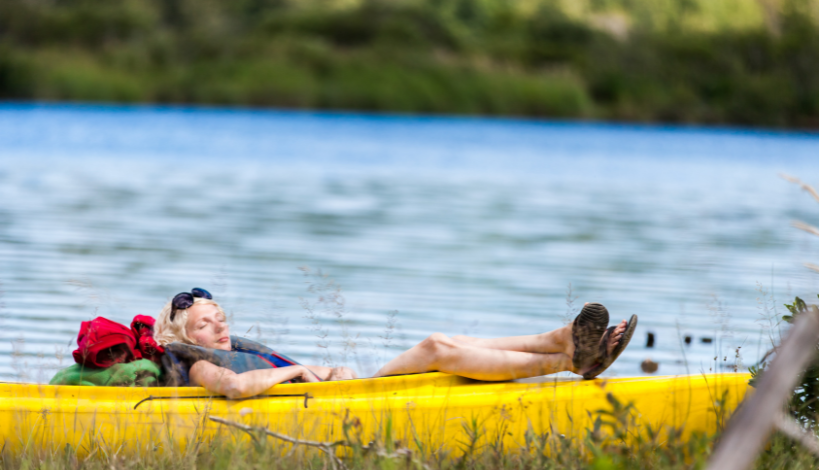
Getting into an kayak from a pier requires slightly different techniques compared to launching from the shoreline.
- Lowering the Kayak: Depending on the height of the pier, you may need to lower your kayak into the water using a rope. Make sure the kayak floats parallel to the pier and is secure before attempting to get in.
- Mounting the Kayak: Sit on the edge of the pier, swinging your legs over the side. Reach out and steady the kayak using the ropes or handles. Slowly lower yourself into the kayak, one leg at a time, maintaining your hold on the pier for balance.
- Positioning: Once seated, adjust your position and get comfortable. Ensure your feet are correctly placed on the footpegs and your back is against the seat before you let go of the pier.
- Pushing off: Lastly, use your paddle to gently push off from the pier and start your kayaking journey.
It sounds complicated but it isn’t. Make sure to take your time here and that you feel balanced and safe getting in.
What is the Easiest Place to Get into a Kayak as a Beginner?
For beginners, the easiest place to get into a kayak is a calm and shallow body of water, preferably a small lake or pond. Even then, be steady and careful as I didn’t have a good core so it was hard for me to get in and balance myself. Most people do great in calm water.
These water bodies typically have little to no current, which makes it easier to maintain control of the kayak while you get in. Also, a sandy or pebbly shoreline is preferable over a steep or rocky one, as it provides a stable surface for launching. It’s also a good idea to practice near a dock or pier where you can easily get help if needed.
How do Seniors Get in and Out of a Kayak?
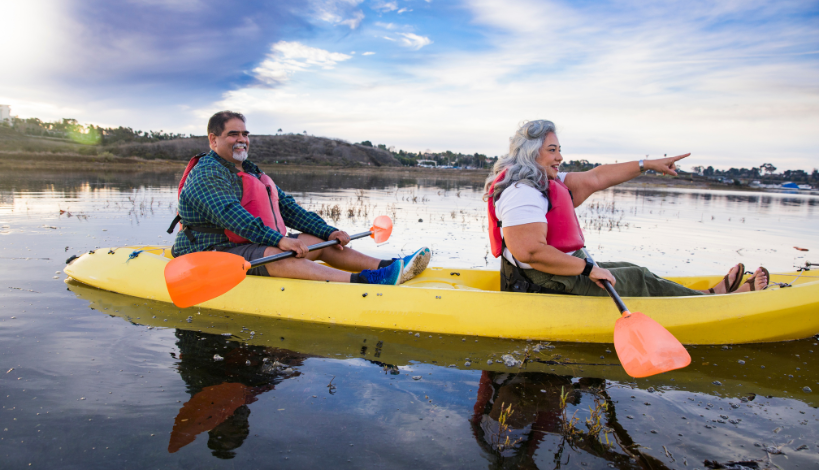
For seniors, getting in and out of a kayak can be a bit more challenging, but with the right approach, it can be done safely and comfortably.
- Support: First, it’s vital to have a sturdy support like a dock or a helper nearby. This support will provide stability as you get in and out of the kayak.
- Use of Kayak Dock: A kayak dock with a low step is ideal, allowing seniors to step directly into the kayak without having to lower themselves too far. These docks often have assist bars that can be held onto for additional support.
- Dry Launch: If using a shoreline, a dry launch site, where the kayak can be placed on a level surface and slid into the water once the paddler is seated, is beneficial.
- Kayak Entry and Exit Aid: There are tools available like the kayak entry and exit aid, a device that hooks onto the side of the kayak and provides a sturdy handle to hold onto.
- Sit-On-Top Kayaks: Elderly individuals may find sit-on-top kayaks to be easier to access than sit-in models. These kayaks can be stepped into rather than having to lower oneself into a cockpit.
- Assistance: Lastly, having a companion to help steady the kayak and offer a hand when needed can be invaluable.
In Summary
If you’re a beginner, getting in and out of a kayak can seem like a daunting, difficult task. However, the more you practice, the more your confidence will develop and you’ll be at easy with this in no time. To learn how to get back into a kayak once you’ve fallen out, you’ll want to read that particular article.
Remember, the key is to take your time, stay focused, and practice, practice, practice.

